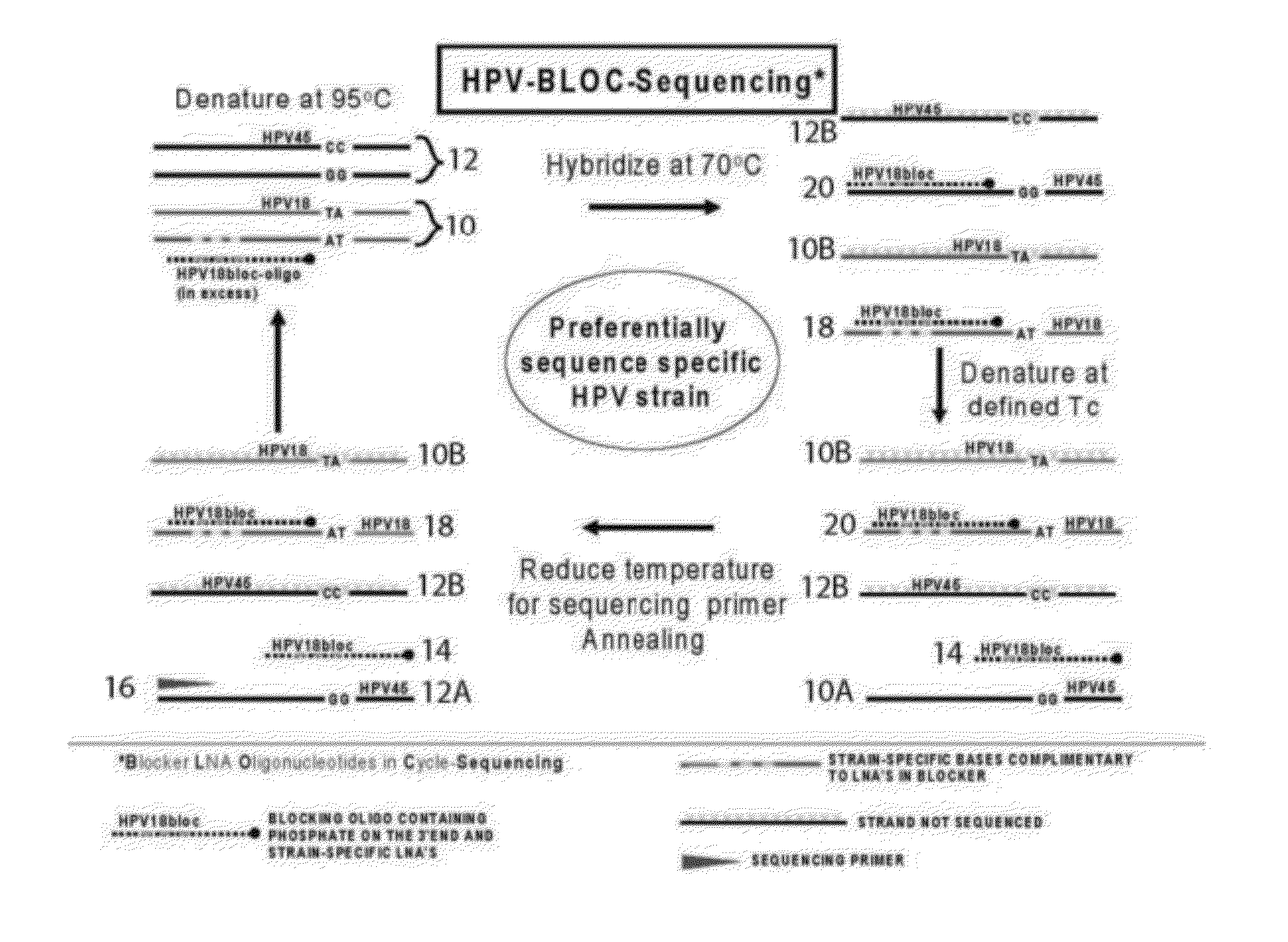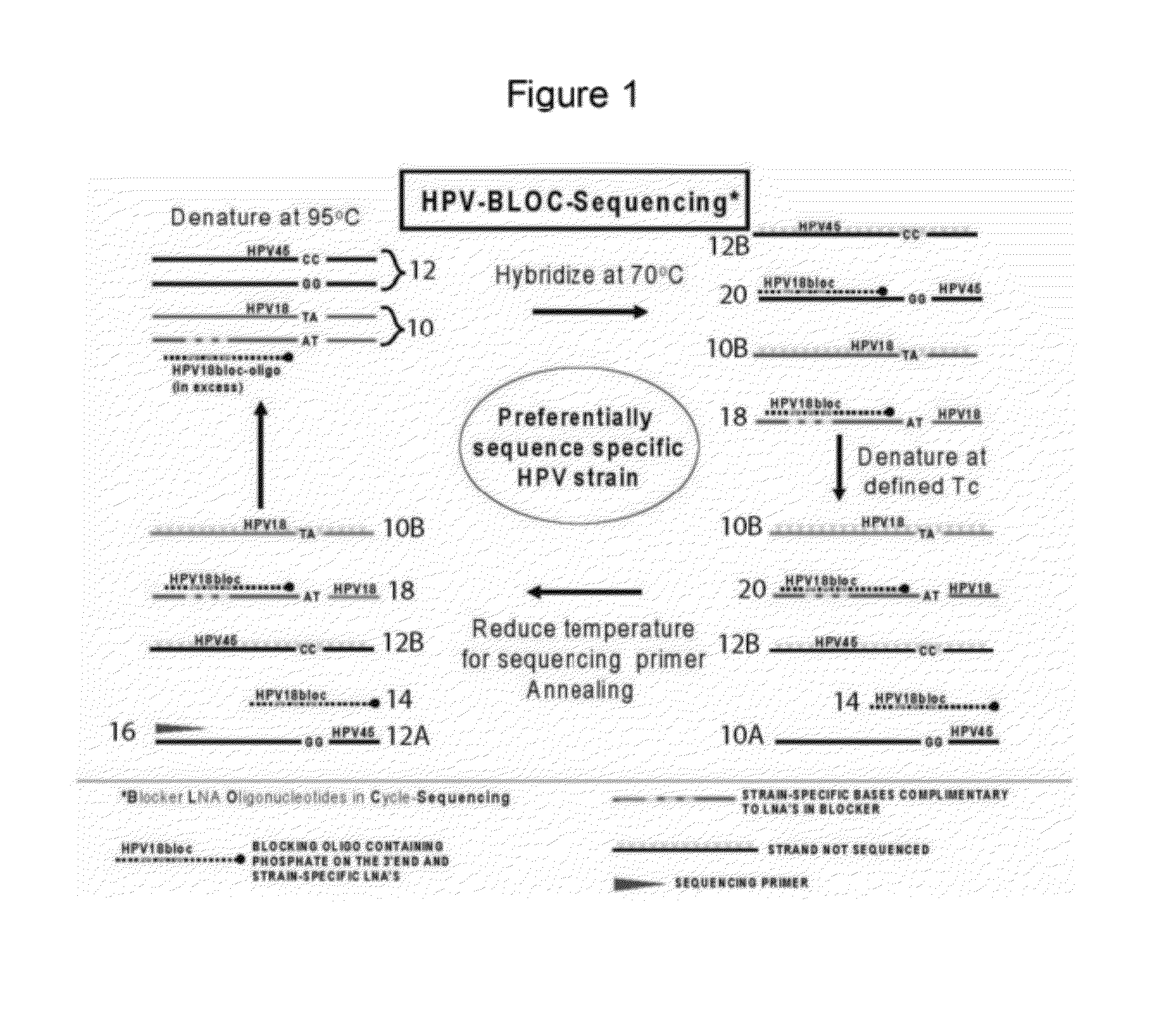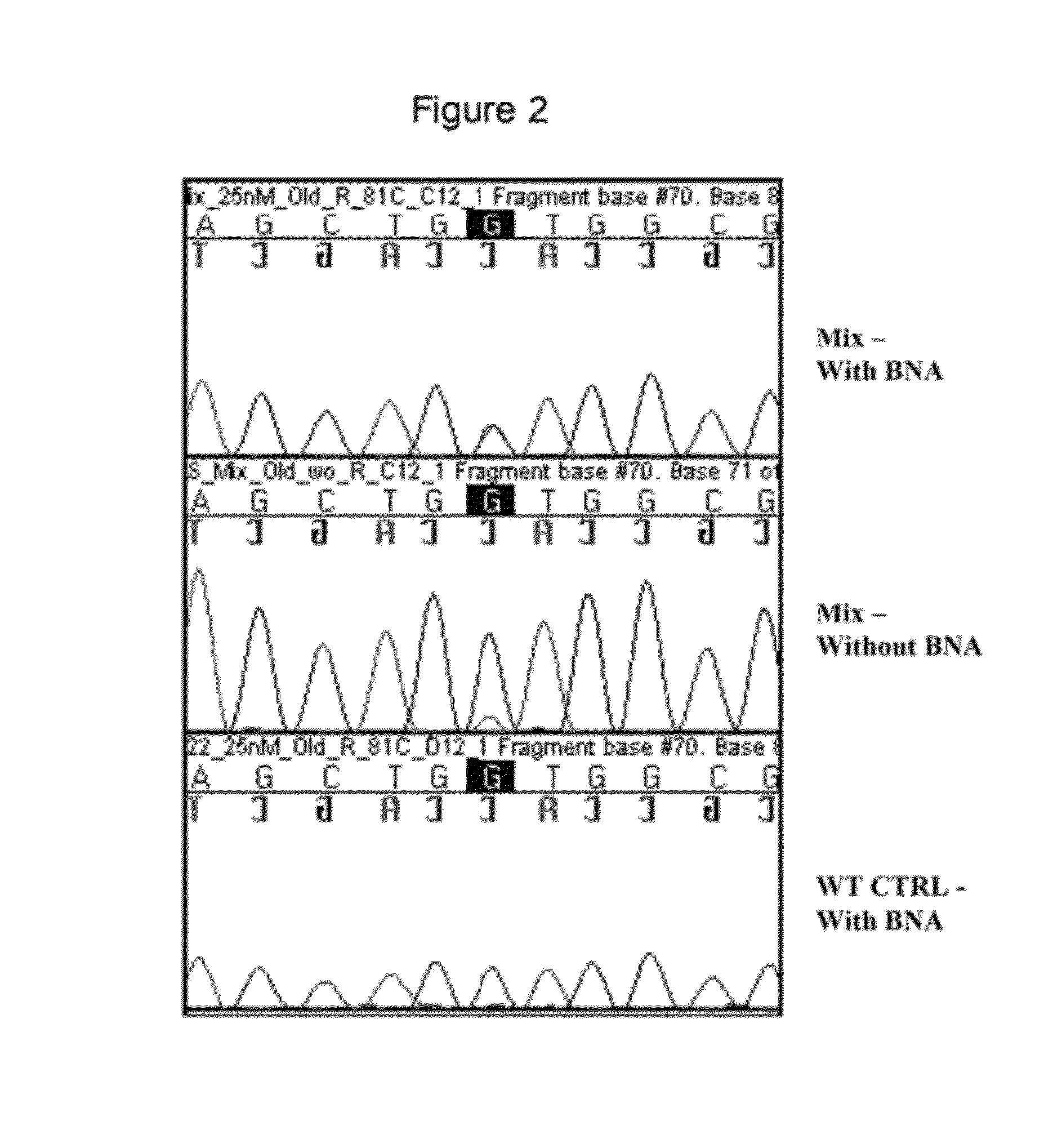Kit and method for sequencing a target DNA in a mixed population
- Summary
- Abstract
- Description
- Claims
- Application Information
AI Technical Summary
Benefits of technology
Problems solved by technology
Method used
Image
Examples
example 1
K-RAS BLOCker Sequencing after Standard PCR using The K-RAS Exon 2 Reverse BNA
[0061]Mutations in K-RAS exon 2, codon 12 and 13 are found in several cancers and are associated with resistance to certain anti-cancer drugs. Thus assays to identify samples or subjects comprising these K-RAS mutations would be beneficial. Often these imitations are difficult to identify because the populations are mixed.
[0062]Blocking nucleic acids (BNA) were designed to specifically bind to the wild-type K-RAS sequence and unless otherwise noted were made by Exiqon. The BNA and sequencing primer used for this experiment were as follows:
BNATc(° C.)Sequencing PrimerK-RASe2CTGGTGGCGTAGGCAAGAGTGCCTTG81.0ATGGTCATAGCTGTTTCCTReverseACGATACAGCTAATTCAGA / 3Phos / (SEQ ID NO: 2)(SEQ ID NO: 1)
wherein the underlined nucleotides are LNAs and the other nucleotides are traditional nucleotides. There was no overlap between the BNA and the sequencing primer.
[0063]The nucleic acid samples were prepared using standard protoco...
example 2
K-RAS BLOCker Sequencing after Standard PCR using the K-RAS Exon 2 Forward BNA
[0066]A blocking nucleic acid (BNA) was designed to bind specifically to the opposite strand of the wild-type K-RAS sequence as well. The BNA and the sequencing primer used for this experiment were as follows:
BNATc(° C.)Sequencing PrimerK-RASe2GCTGAAAATGACTGAATATAAACTTGTG77.0TGTAAAACGACGGCCAGTForwardGTAGTTGGAGCTGGTGGCGTA / 3Phos / (SEQ ID NO: 6)(SEQ ID NO: 5)
wherein the underlined nucleotides are LNAs and the other nucleotides are traditional nucleotides. There was no overlap between the BNA and the sequencing primer.
[0067]The nucleic acid samples were prepared using standard protocols and the nucleic acid containing the codon 12 mutation (K-RAS G12V; 5′-AGCTGTTGGCG-3′; SEQ ID NO: 7; underlined base is site of mutation) represented 15% of the total nucleic acid and the remaining 85% of the sample was wild-type genomic DNA (5′-AGCTGGTGGCG-3′; SEQ ID NO: 8; underlined base is site of mutation). The BNA (25 nM) ...
example 3
K-RAS BLOCker Sequencing Example—After COLD-PCR Detection of the K-RAS G12R Mutation
[0069]Recently, Ice COLD-PCR (Improved and Complete Enrichment CO-amplification at Lower Denaturation temperature PCR; Milbury et al., Nucleic Acids Res. 2011 Jan. 1; 39(1):e2.) has been shown to improve drastically the detection limit of K-RAS exon 2 mutations. See also International Patent Publication No. WO2011 / 112534. In Ice COLD-PCR, mutant DNA (Mut) is amplified preferentially in the presence of wild-type (WT) DNA. The use of a reference sequence oligonucleotide (RS-oligo) complementary to one of the WT strands results in linear amplification of the WT sequences but exponential amplification of any Mut sequences present. The RS-oligos may contain Locked Nucleic Acids (LNA™) which increases the difference in denaturation temperature between the RS-oligo:WT DNA duplex as compared to the RS-oligo:Mut DNA duplex. The PCR was carried out as described by Milbury et al. using Phusion® Polymerase in th...
PUM
| Property | Measurement | Unit |
|---|---|---|
| Temperature | aaaaa | aaaaa |
| Melting point | aaaaa | aaaaa |
| Nucleic acid sequence | aaaaa | aaaaa |
Abstract
Description
Claims
Application Information
 Login to View More
Login to View More - R&D
- Intellectual Property
- Life Sciences
- Materials
- Tech Scout
- Unparalleled Data Quality
- Higher Quality Content
- 60% Fewer Hallucinations
Browse by: Latest US Patents, China's latest patents, Technical Efficacy Thesaurus, Application Domain, Technology Topic, Popular Technical Reports.
© 2025 PatSnap. All rights reserved.Legal|Privacy policy|Modern Slavery Act Transparency Statement|Sitemap|About US| Contact US: help@patsnap.com



